Chapter 12 - The Citric Acid Cycle / Tricarboxylic Acid Cycle (TCA) / Krebs Cycle
1/29
There's no tags or description
Looks like no tags are added yet.
Name | Mastery | Learn | Test | Matching | Spaced |
|---|
No study sessions yet.
30 Terms
Citric Acid Cycle (TCA Cycle)
Amphibolic - catabolic & anabolic
involved in aerobic catabolism of carbs, lipids, AA
intermediates are starting points for many biosynthetic reactions
enzymes of cycle are in mitochondria (in eukaryotes) or cytosol (in bacteria)
energy of oxidation reactions is largely conserved as reducing power
coenzymes NAD and Uniquinone (Q) are reduced
Entry of Pyruvate into the Mitochondrion
pyruvate translocase transports pyruvate into mitochondria in symport with H+
translocase is located in inner membrane of mitochondria

Pyruvate Dehydrogenase Complex (PDH Complex)
multienzyme complex containing 3 enzymes + 5 coenzymes (+ ATP coenzyme as regulator)
enzyme components
E1 = pyruvate dehydrogenase
E2 = dihydrolipoamide acetyltransferase
E3 = dihydrolipoamide dehydrogenase
coenzyme components
Thiamine Pyrophosphate (TPP)
HS—CoA
FAD & NAD+
Lipoic Acid
ATP
Structure of PDH Complex
a) Core of complex has 24 E2 chains
b) model of entire complex:
12 E1 dimers (blue)
6 E3 dimers (green
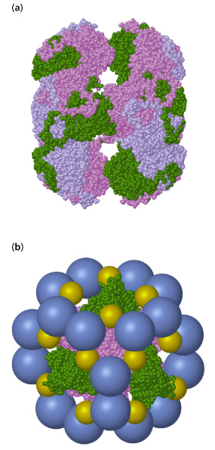
Role of PDH Complex Enzymes
NAD+ & HS—CoA are cosubstrates (loosely bound)
TPP, lipoamide, FAD are prosthetic groups (tightly bound)
ATP is a regulator
Lipoamide on E2 transfers the 2 C unit from E1 active site to E3 active site (substrate channeling)
Steps of PDH Complex
Step 1: Pyruvate + TPP + H+ —pyruvate dehydrogenase→ Hydroxyethylthiamine pyrophosphate (HETPP) + CO2
Step 2 (also catalyzed by E1): HETPP + Lipoamide → Acetyl-TPP + Dihydrolipoamide + H+ → Ylid + Acetyl-dihydrolipoamide
Step 3: Acetyl-dihydrolipoamide + HS—COA → Dihydrolipoamide + Acetyl CoA
Step 4: Dihydrolipoamide + E3—FAD → Lipoamide + E3—FADH2
Step 5: E3—FADH2 + NAD+ → E3—FAD + NADH + H+

Step 1 of TCA Cycle
Acetyl CoA + Oxaloacetate + H2o → Citrate + HS—CoA + H+
entry of substrate by condensation with oxaloacetate using citrate synthase
irreversible
carboxyl group of aspartate attacks methyl group of acetyl-CoA which is then joined to C4 of oxaloacetate
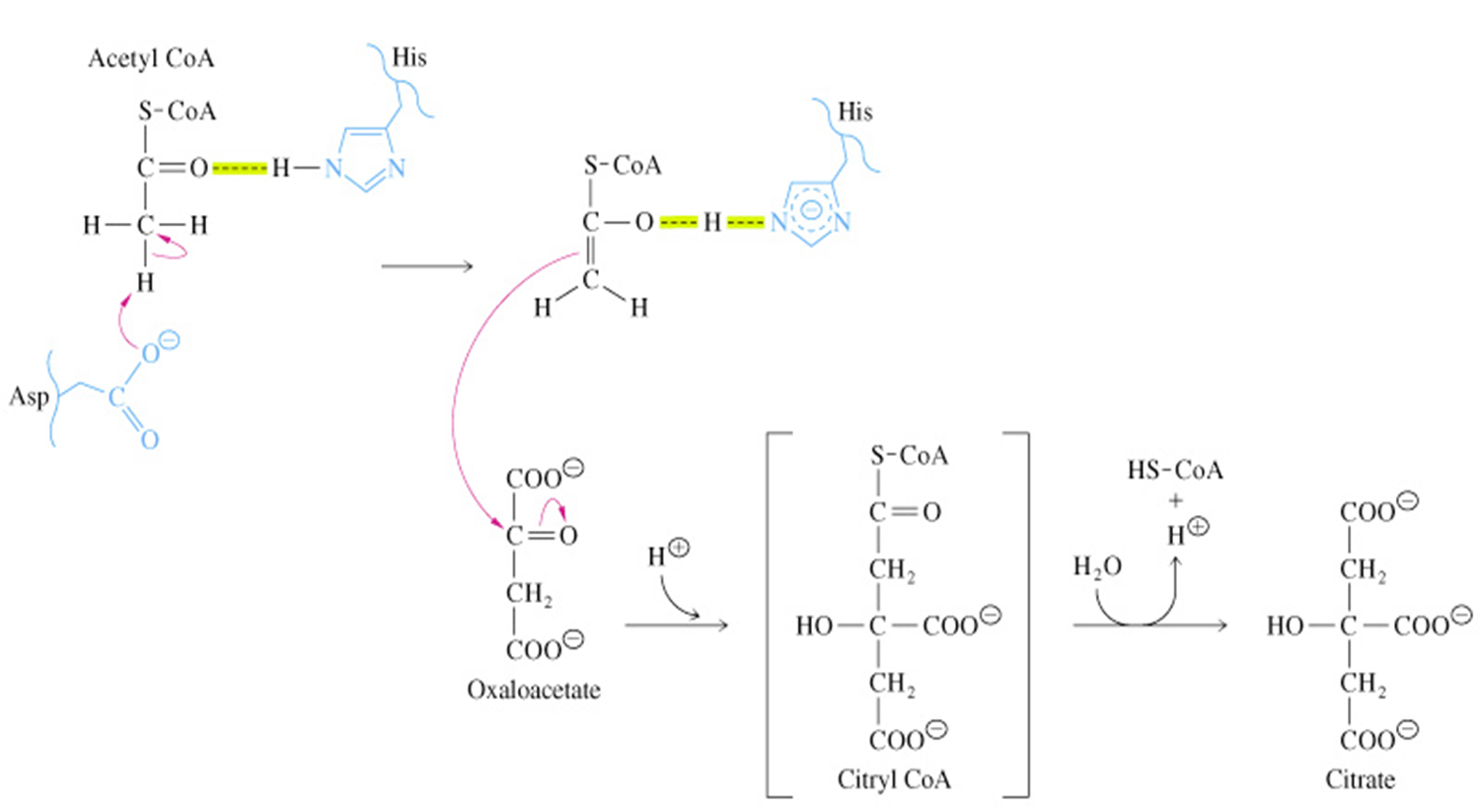
Step 2 of TCA Cycle
Citrate ⇆ Isocitrate
rearrangement using aconitase
type of isomerase
elimination of H2O from citrate to form C=C bond of cis-aconitate
stereospecific addition of H2O to cis-aconitate to form 2R,3S-Isocitrate

Step 3 of TCA Cycle
Isocitrate + NAD+ → α-Ketoglutarate + NADH + CO2
first oxidative decarboxylation of isocitrate to α-ketoglutarate (α-kg) using isocitrate dehydrogenase
irreversible
¼ oxi-red reactions
hydride ion from C2 of isocitrate is transferred to NAD+ to make NADH
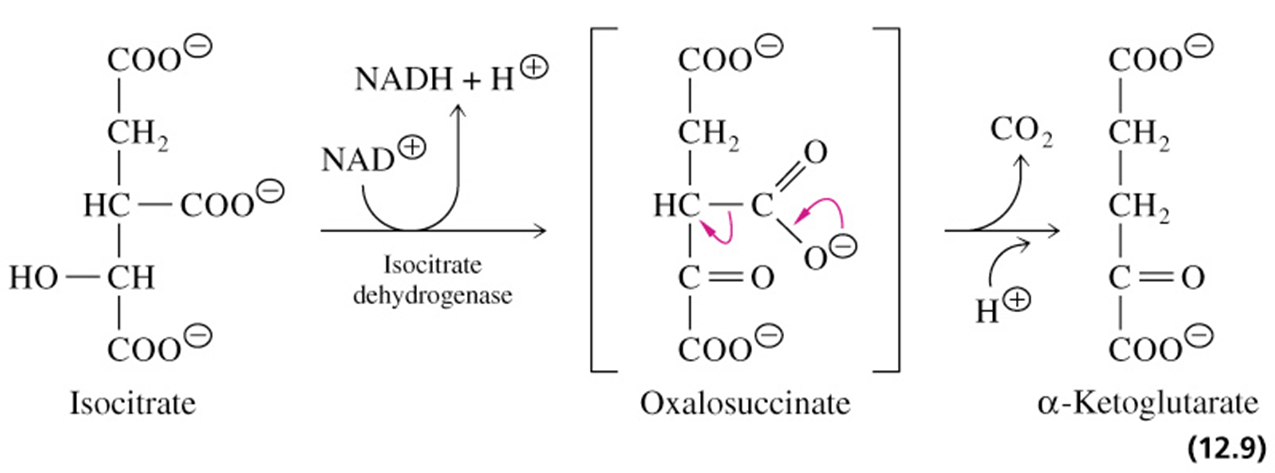
Step 4 of TCA Cycle
α-Ketoglutarate + HS—CoA + NAD+ → Succinyl CoA + NADH + CO2
second oxidative decarboxylation using α-ketoglutarate dehydrogenase complex
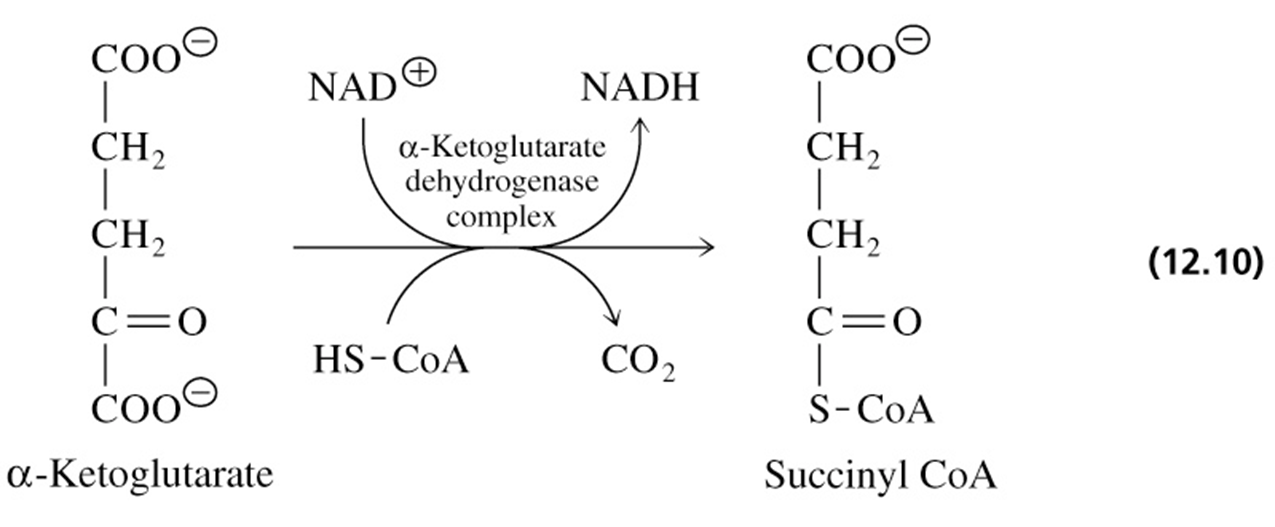
irreversible
Structure of α-kg Dehydrogenase Complex
similar to pyruvate dehydrogenase complex
same coenzymes, identical mechanism
E1 - α-kg dehydrogenase (with TPP)
E2 - succinyltransferase (with flexible lipoamide prosthetic group)
E3 - dihydrolipoamide dehydrogenase (with FAD)
Step 5 of TCA Cycle
Succinyl CoA + GDP (or ADP) + Pi ⇆ Succinate + GTP (or ATP) + HS—CoA
substrate-level phosphorylation using succinyl-CoA synthetase
free energy in thioester bond of succinyl CoA is conserved as GTP (or ATP in plants, some bacteria)
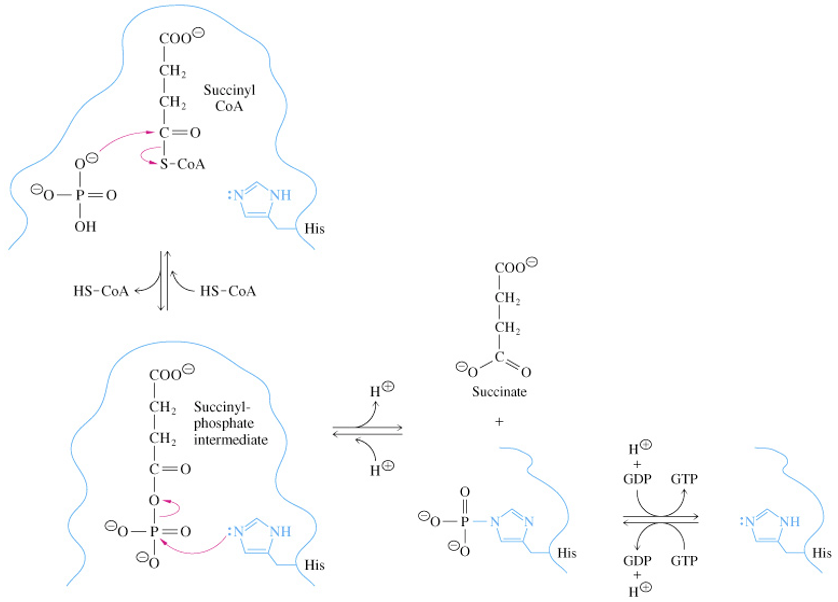
Step 6 of TCA Cycle
Succinate + Q ⇆ Fumarate + QH2
oxidation using succinate dehydrogenase complex (SDH)
located on inner mitochondrial membrane
dehydrogenation is stereospecific; only trans isomer formed
substrate analog malonate is competitive inhibitor of SDH complex
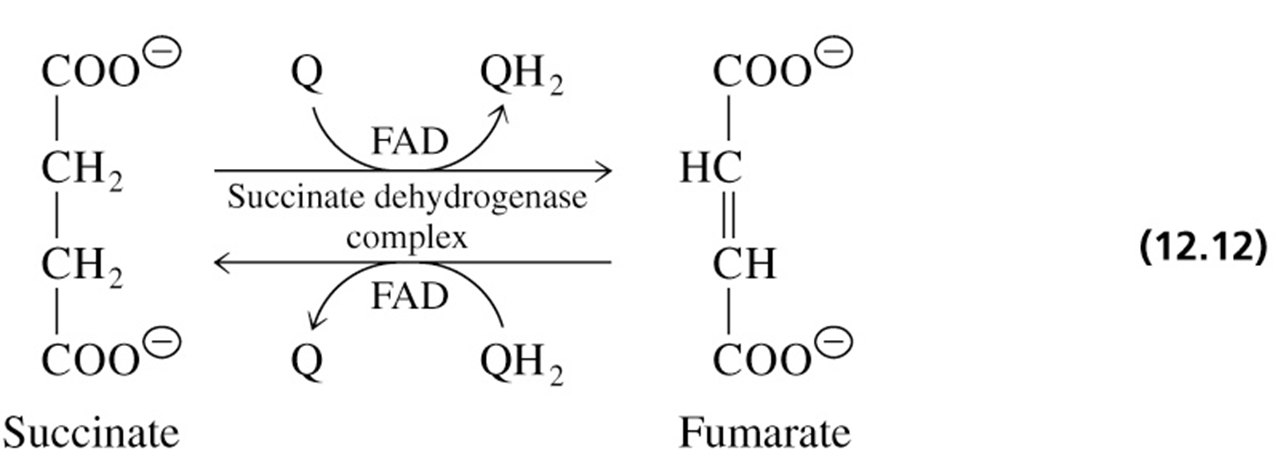
Malonate
structure analog of succinate
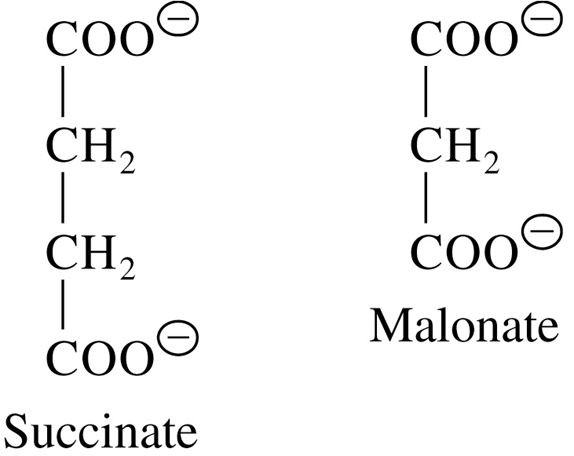
Structure of SDH Complex
complex of several polypeptides, FAD prosthetic group, iron-sulfur clusters
electrons are transferred from succinate to ubiquinone (Q), a lipid-soluble mobile carrier of reducing pwoer
FADH2 generated is reoxidized by Q
QH2 is released as mobile product
Step 7 of TCA Cycle
Fumarate + H2O ⇆ L-Malate
hydration by fumarase
stereospecific trans addition of water to double bond of fumarate to form L-malate

Step 8 of TCA Cycle
L-Malate + NAD+ ⇆ Oxaloacetate + NADH + H+
oxidation by malate dehydrogenase
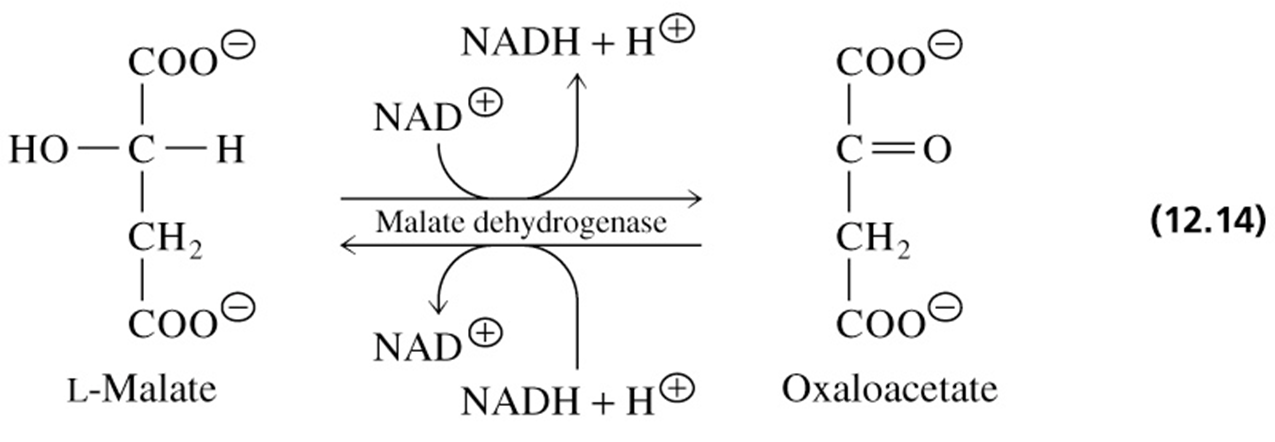
Summary of TCA Cycle
For each acetyl CoA:
2 molecules of CO2 are released
coenzymes NAD+ and Q are reduced to NADH and QH2 respectively
1 GDP (or ADP) is phosphorylated to GTP (or ATP) respectively
GDP used in mammals, ADP used in yeast/bacteria
initial acceptor molecule (oxaloacetate) is reformed
Energy Conservation in TCA Cycle
energy is conserved in reduced coenzymes NADH, QH2, and GTP
NADH & QH2 can be oxidized to produce ATP by oxidative phosphorylation

Reduced Coenzymes That Produce ATP
3 NADH
1 NADH = 2.5 ATP
2 QH2
1 QH2 = 1.5 ATP
1 GTP (or ATP)
Complete oxidation of 1 Acetyl CoA = 10 ATP
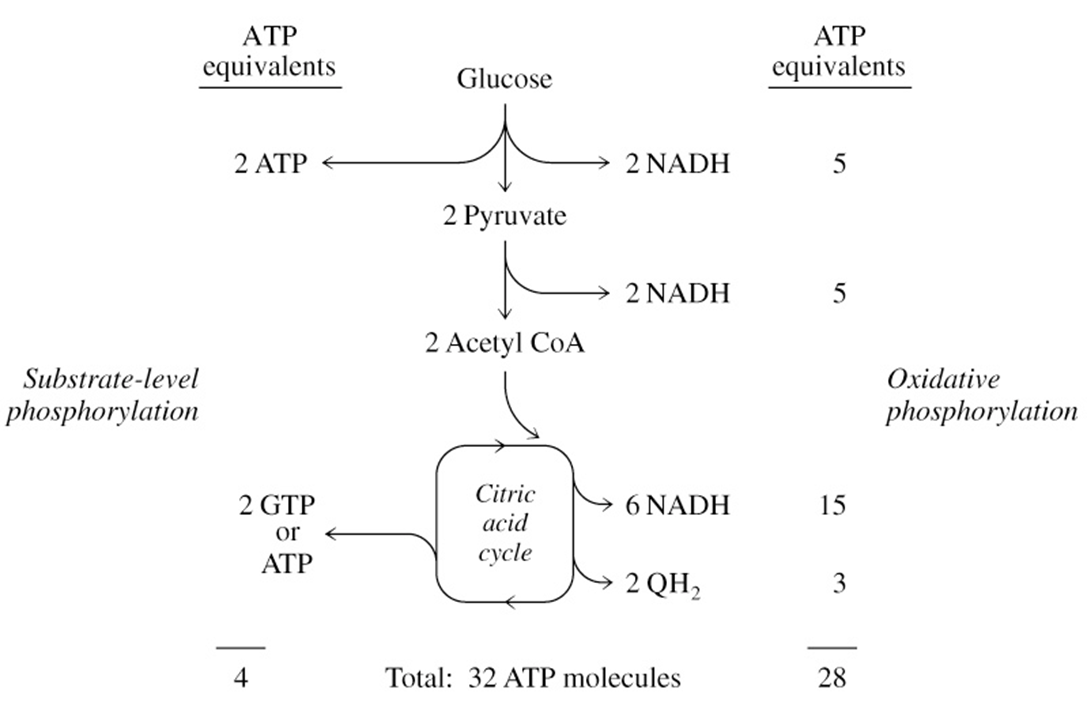
Fate of NADH in Anaerobic Glycolysis
NADH is produced by G3PDH reaction is reoxidized to NAD+ in pyruvate to lactate reaction
NAD+ recycling allows G3PDH reaction (and glycolysis) to continue anaerobically
Fate of NADH in Aerobic Glycolysis
glycolytic NADH is not reoxidized via pyruvate reduction but is available to fuel ATP formation
glycolytic NADH (cytosol) must be transferred to mitochondria (electron transport chain location)
2 NADH shuttles are available
NADH Shuttles
Malate-Aspartate Shuttle (most common)
1 Cytosolic NADH yields ~2.5 ATP
total 32 ATP/glucose
Glycerol Phosphate Shuttle
1 Cytosolic NADH yields ~1.5 ATP
total 30 ATP/glucose
Regulation of TCA Cycle
allosteric modulators
covalent modification of cycle enzymes
supply of acetyl CoA
regulation of pyruvate dehydrogenase complex controls acetyl CoA supply
Regulation of E2 & E3 in PDH Complex
increased levels of Acetyl CoA & NADH inhibit E2 & E3 in mammals and E. coli
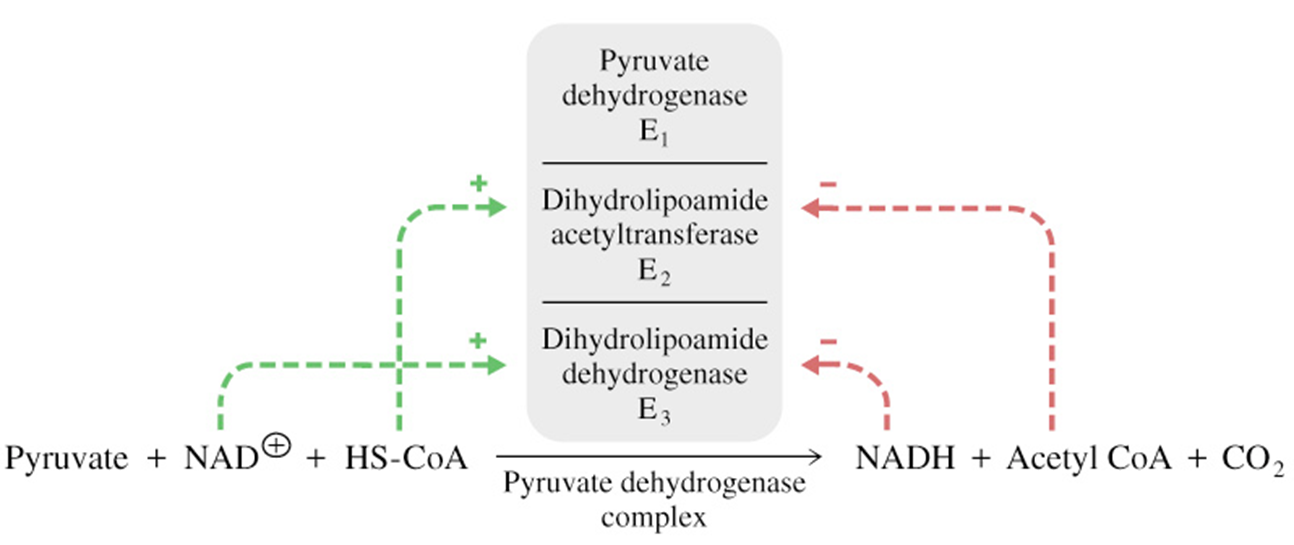
Regulation of Mammalian E1 in PDH Complex by Covalent Modification
Phosphorylation / Dephosphorylation of E1
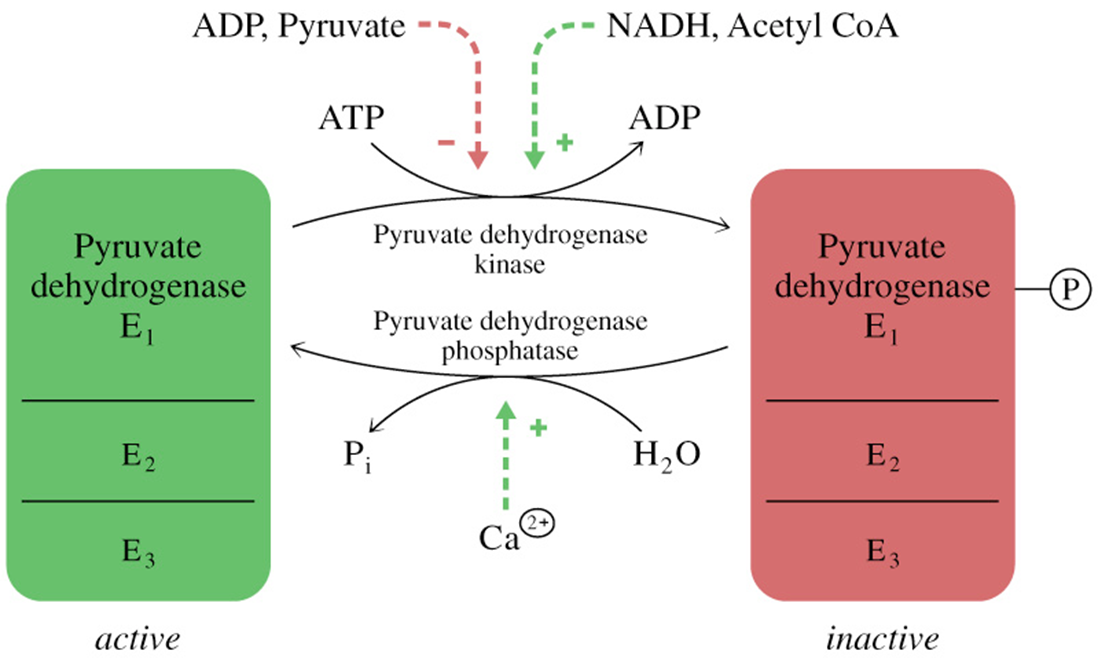
Regulation of PDH Complex by PDK & PDP
Pyruvate Dehydrogenase Kinase (PDK)
activated by NADH and Acetyl CoA, leading to inactivation of PDH complex
inhibited by pyruvate and ADP, leading to activation of PDH complex
Pyruvate Dehydrogenase Phosphatase (PDP)
stimulated by Ca2+, leading to activation of PDH complex
Regulation of Isocitrate Dehydrogenase (ICDH)
Mammalian ICDH
allosteric effectors: activation with Ca2+ & ADP, inhibition with NADH
E. Coli ICDH
bifunctional enzyme is reciprocally regulated by intermediates of glycolytic and TCA cycles
Anaplerotic Reactions
replenishment of intermediates in a metabolic pathway
ex: pyruvate carboxylase in mammals, phosphoenolpyruvate carboxylase in plants and bacteria
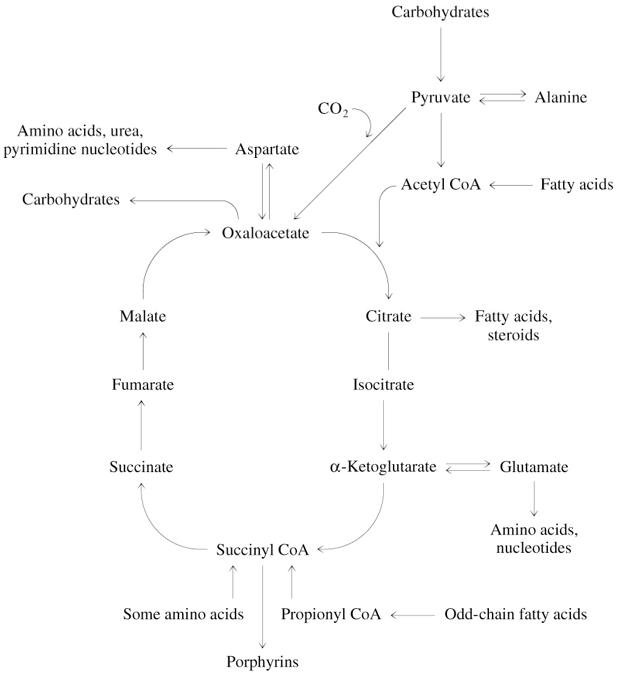
Glyoxylate Cycle
pathway for formation of glucose from noncarbohydrate precursors (acetyl CoA or any of its precursors) in plants, bacteria, ad yeast (not animals)
leads from 2-C compounds to glucose
ethanol or acetate can be metabolized to acetyl CoA, then glucose
stored in seed oils in plants are converted to carbs during germination
can go from isocitrate to succinate or glyoxylate (skips steps 3-5) using isocitrate lyase
in animals, acetyl CoA is not a C source for net formation of glucose